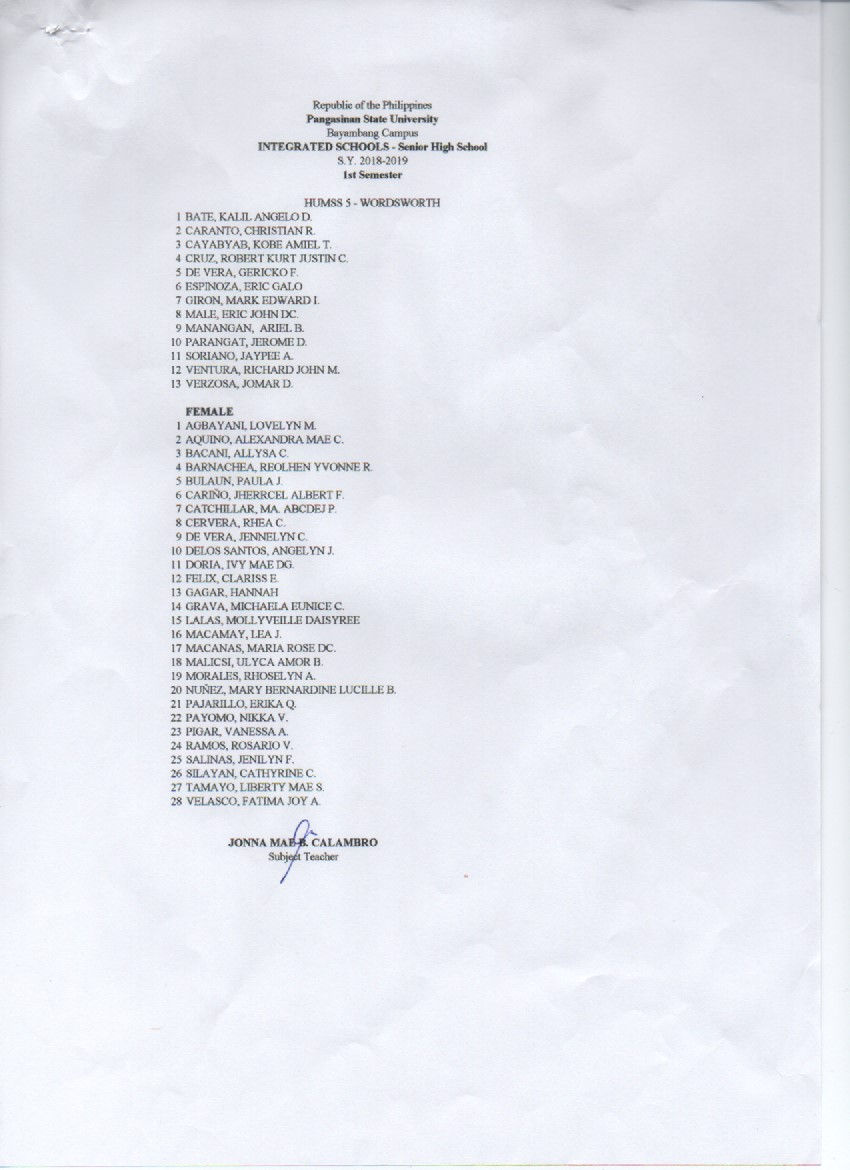School Profile & Academic Support System | General Information and Academic Administration
- Achmad Sofari Usman

- Aug 20, 2018
- 3 min read
1.1 School Profile
Location
Bayambang Campus, Pangasinan, Philippines. The school is located at zone VI, Poblacion, Bayambang, Pangasinan;telephone number: 592-2704, 592-2207; website:http://www.psubc.edu.ph/cms/; The school is under the College of Teacher Education; serves as training ground for future HS Teachersin Pangasinan State University.
Vision and Mission
Vision
“To become an ASEAN Premier State University in 2020”
Mission
The Pangasinan State University, through instruction, research, extension, and production, commits to develop highly principled, morally upright, innovative and globally component individuals capable of meeting the needs of industry, public service and civil society.
Guiding Philosophy
The Pangasinan State University’s leadership adheres to the Filipino educational philosophy that education is geared towards better citizenship and livelihood and the United Nations’ declared that Education is for all giving access to quality education.
History
Pangasinan State University, commonly referred to as PSU, is a state university in the Philippines that is notable for its many locations throughout the province of Pangasinan. It is mandated to provide advanced instructions in the arts, agricultural and natural sciences as well as in technological and professional fields. Its main campus is located in Lingayen, Pangasinan. Other campuses are located in Alaminos City, Asingan, Bayambang, Binmaley, Infanta, San Carlos City, Santa Maria, and Urdaneta City.
Pursuant to Presidential Decree No. 1479 promulgated by then President Ferdinand E. Marcos, the Pangasinan State University was created. The institution was conceived in the concept of an umbrella system, thus all college level courses of state-owned institutions within the province of Pangasinan were integrated into the university system.
The PSU Bayambang Campus had a very humble beginning. It started as the Bayambang Normal School in 1922. It offered then the secondary normal course which prepared much needed teachers for the country. The school closed in 1935 due to inadequate funds but re-opened in 1948 under a new name – the Pangasinan Normal School (PNS), which offered the two – year teacher education program. It was one among the first normal schools in the Philippines. It was in 1952 that the college offered the four – year degree in teacher education for elementary teachers by virtue of RA No. 975. In 1953, the school with elementary schools in the District of Bautista and the Bayambang National High School were merged to become the Philippine UNESCO Community Training Center. It operated as a school division then. Republic Act No. 5705 converted the school into a chartered institution – the then Central Luzon Teachers College on June 1969.
The Pangasinan State University Bayambang Campus is also among the constituent campuses of the University to actively house a Laboratory High School (a school under the College of Teacher Education; serves as training ground for future HS Teachers) which dates its history by its then – name, Central Luzon Teachers College. The Pangasinan State University Laboratory High School offers secondary education in Science Curriculum. The School also offered Basic Education Curriculum until March 2010. Batch 2010 – 2011 seniors was the first batch of the school in years to graduate from an all – science curriculum enabled sectioning. It also was the first batch to graduate from an all – single section per year system which was decided upon dating back on 2007. The batch makes history in being the first batch to hold graduation rites in the first ever Integrated Closing Exercises which houses both the LHS and KD – ELS (Kindergarten Department – Elementary Laboratory School) in one Closing Ceremony. The Ceremony was successful, uniting the two laboratory schools of the Campus; KD – ELS and LHS.
1.2 Academic Support System
In PSU – Integrated High School, Humanities and Social Sciences classes are managed into 4 classes which are HUMSS I, HUMSS II, HUMSS IV, and HUMSS V. The detail information is provided in the pictures below:




PSU – Integrated High School has several facilities to foster a good learning environment such as library, octagon students’ area, and faculty rooms. In addition, there are some tools which can help the teachers in preparing instructional media, for example projector, laptop and computer, printer and papers, and blackboard and chalks.








Comments